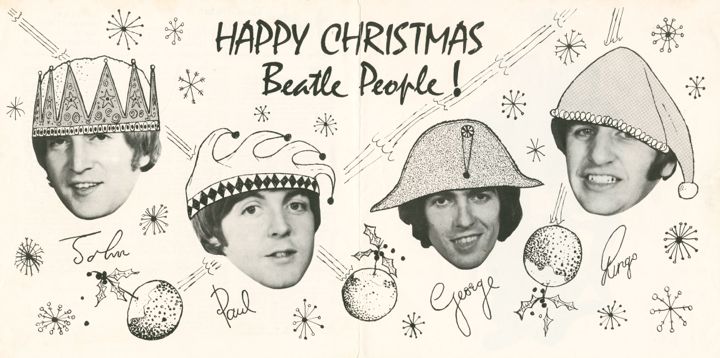
COCA-COLA WORLD
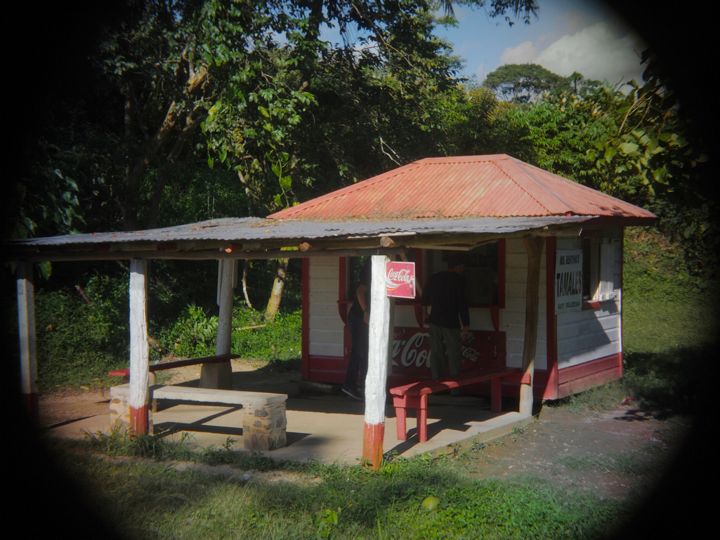
Photo by Jae Song, Belize.
ROBERT JOHNSON CENTENNIAL
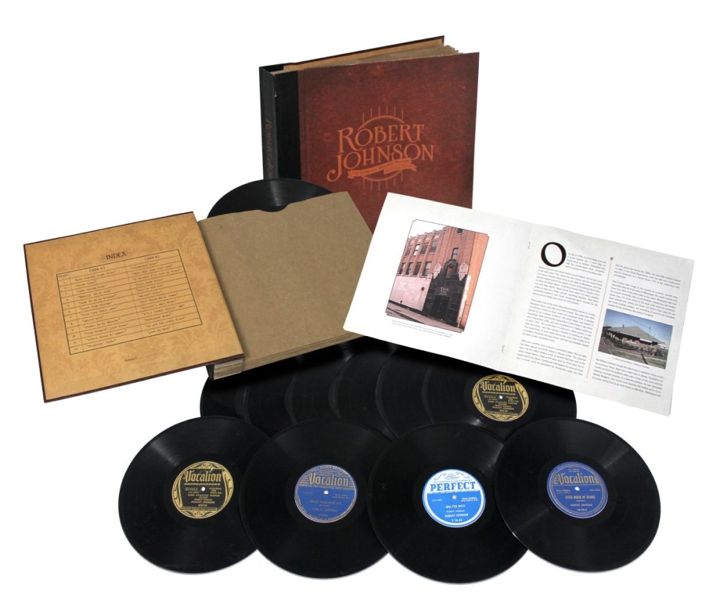
In honor of the centennial of Robert Johnson's birth this past May, Sony issued an amazing set of his works, on vinyl. Twelve ten-inch discs — the size of 78s but playing at 45rpm to accommodate modern equipment — reproduce all twelve of his records as originally released, twenty-four songs in all, complete with reproductions of the record labels.
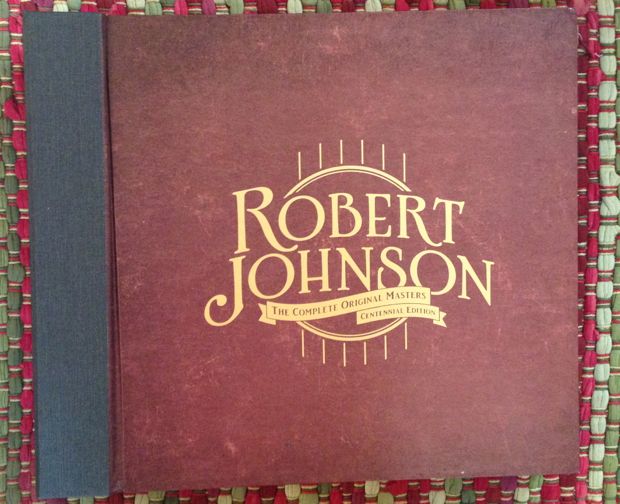
The discs are packaged in a vintage-style 78 album — from which term we get the still-current designation for a single-disc LP or CD. The album comes with a CD of the new re-masters of Johnson's complete works (including the five outtakes not released on 78), a CD of related music and a DVD biography of the legendary bluesman.
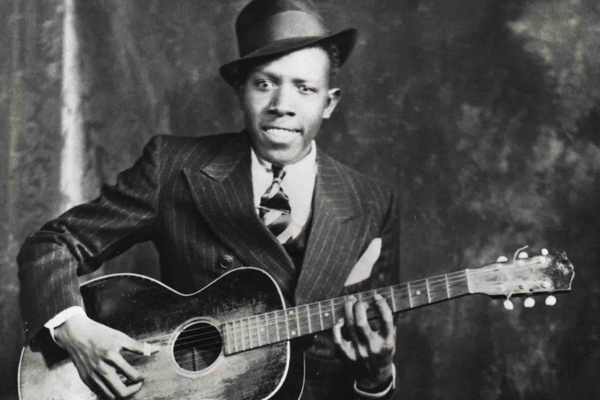
I'm sorry that the set is so expensive — making it a kind of fetish object for Johnson worshipers, rather than the sort of thing that should be a part of every civilized American home, like a leather-bound set of the complete works of Shakespeare or Dickens, like a fine edition of The Bible. Johnson's work belongs in that company — as some of the greatest art ever produced in this country . . . as art that has helped define this country.
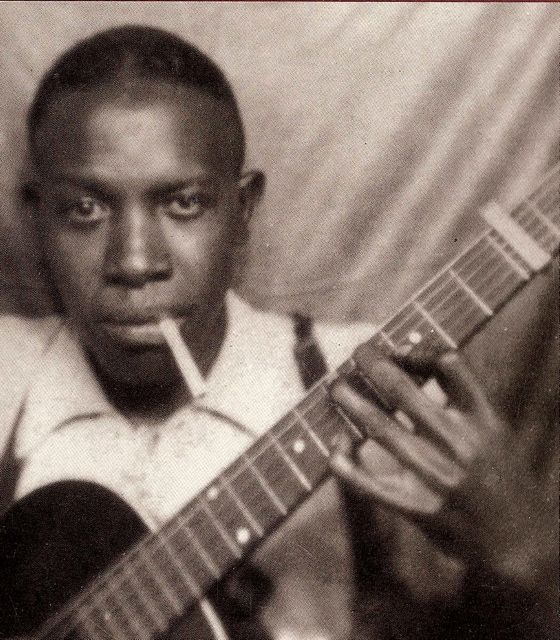
I went mad and bought it despite the price, and haven't regretted it. Pulling those discs out of sleeves and playing them on a turntable, just as they were originally made to be played, is a profound experience. This is partly due to the thrilling immediacy of the new re-masters, from which the commemorative vinyl was created. It may sound a bit processed to some ears, but there's no denying the startling presence of Johnson's voice and guitar, with all but the most minimal noise from the ancient discs eliminated.
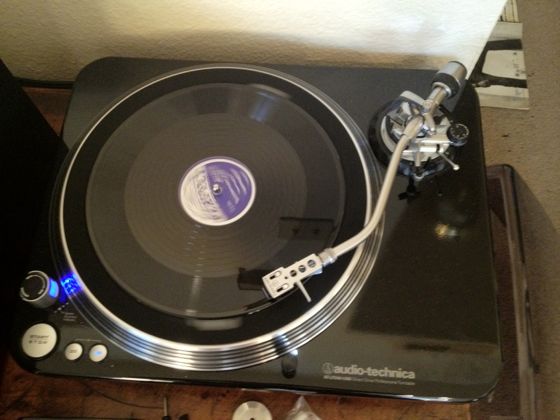
It's partly due to the ritual of spinning the music on a turntable, putting you in touch with the earlier generations who first heard Johnson's music that way — the relatively few people who bought the original 78s, the musicians of the late Sixties and early Seventies, like Bob Dylan and Eric Clapton, who heard and were deeply influenced by the LP reissues.
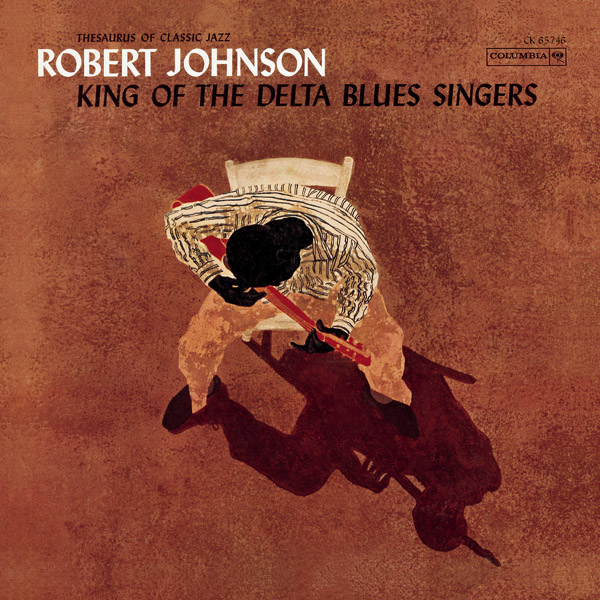
Things are bad in America right now, politically, socially and economically. But anyone who's tempted to give up on the republic only needs to listen to the music of Robert Johnson to believe in America again. It's the best of what we have been — the best of what we might still be again.
GLORIA IN EXCELCIS DEO
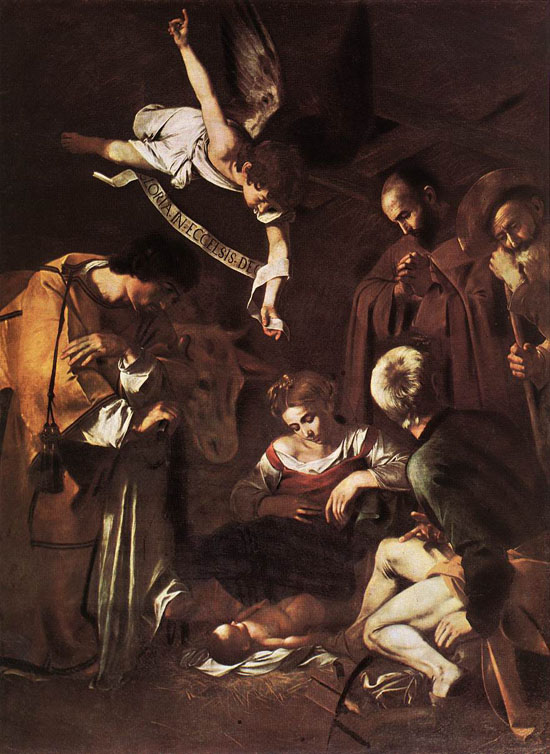
A NEW KIND OF SEXUALITY
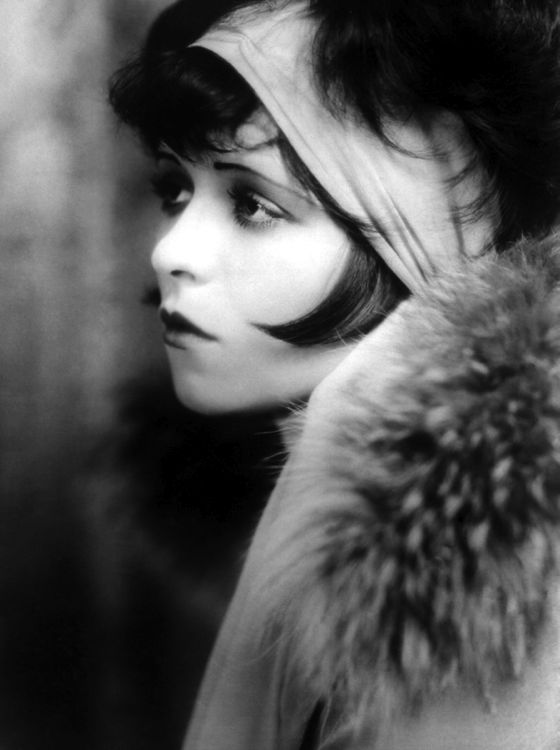
Characters in popular art who make fun of sex, of their own sexuality, while still being deeply and powerfully sexy strike me as peculiarly American — I can't think of any examples that originated in other countries.
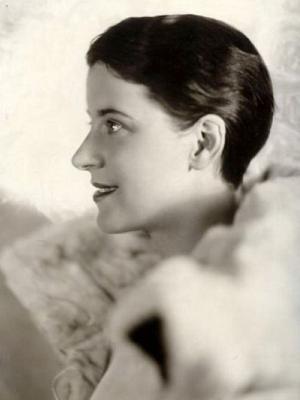
The English music hall created a kind of ditzy sexpot, best exemplified by Beatrice Lillie (above), but the ditzy sexpot had a very restricted erotic appeal — she tried to appear accidentally sexy, and was never sexually threatening in any way. That was her charm. The “naughty schoolgirl” figure crosses cultures, too, but her mask of good-natured innocence is just that — a mask, behind which to deliver erotic innuendo.
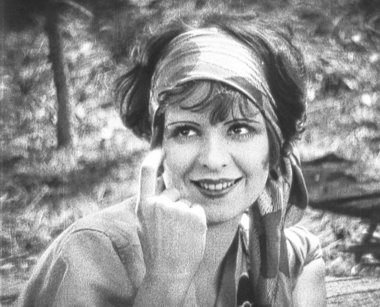
But America came up with something new — and as far as I can tell, Clara Bow was its first example. She was frankly, unabashedly sexual, often in a way that threatened buttoned-up men, but she had a way of laughing it all off as a lark — as something not to be taken too seriously.
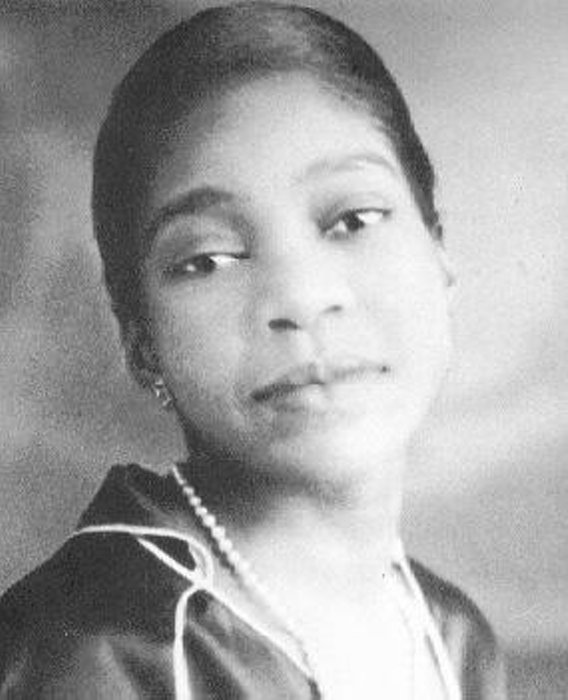
You can see traces of this attitude in the great female blues singers of the early 20th Century, like Bessie Smith, but Smith knew that she was being bad — her tossed-off double-entendres had a leering quality, suggesting a down and dirty smirk.
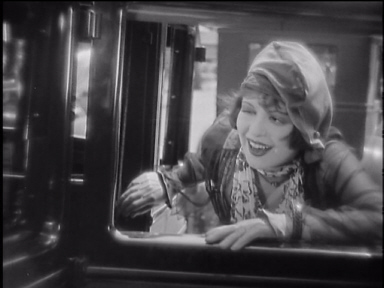
Bow had none of this — to her there was nothing down and dirty about sex at all. It was just about having fun, and if it was the most important thing in life, that was only because having fun was the most important thing in life. Her overt but always skillful and imaginative flirtatiousness honored the game of flirtation, accepted it for what it was — if men didn't understand it, or know how to play it well, that was their problem. It gave her an advantage which she cheerfully exploited.
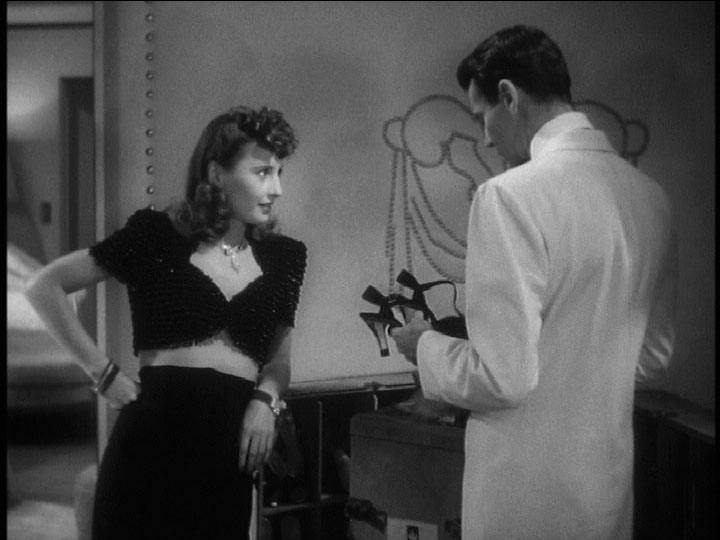
Bow was different from the wise-cracking females in screwball comedies, who played the game with an edge of cynicism, somewhat resenting men for their dull-wittedness, even if they ultimately forgave them for it. Stanwyck's character in The Lady Eve (above) is the paradigm for this type.
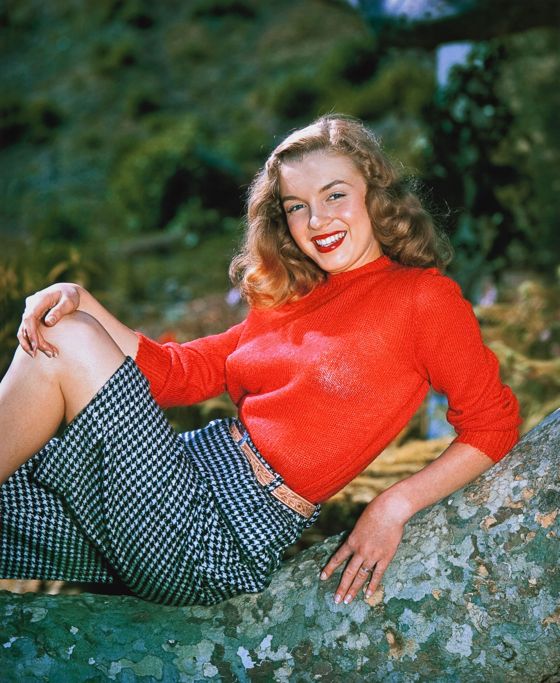
Bow's true successors in American culture were Marilyn Monroe and Elvis Presley, who were sexy, knew they were sexy, laughed at their own sexiness while flaunting it without shame, in a state of paradoxically pure innocence about it.
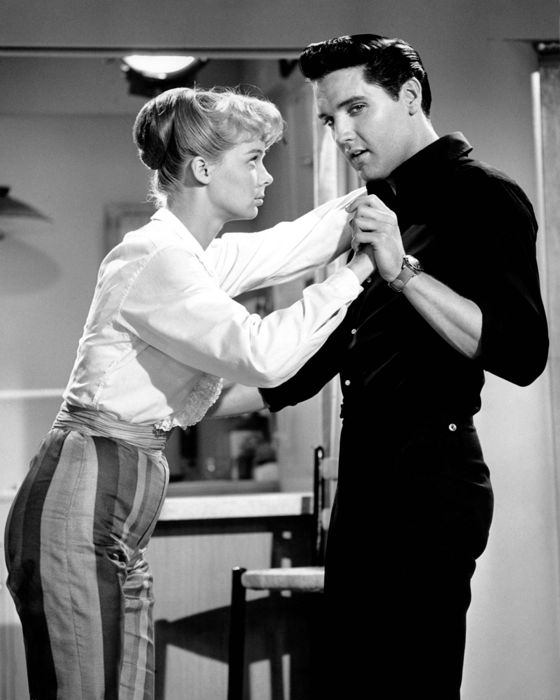
They could be ironic but never, ever cynical.
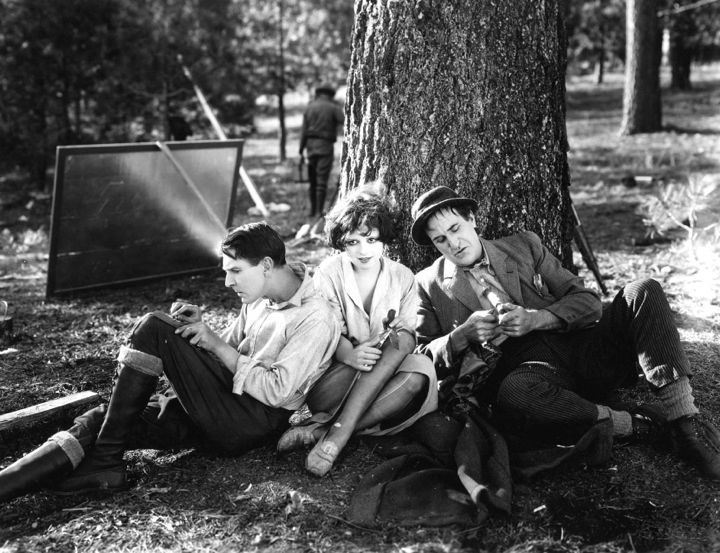
The new DVD set Treasures From American Film Archives: The West has a stupendously good print of the silent film Mantrap (above) in which Bow definitively realized the new type of sexuality she pioneered. It's one of the greatest and most electrifying performances in the history of cinema, a performance that led to her being cast in It — to be seen as “The 'It' Girl”. They had to call it “It” in her case, because there was no existing word for what she had — no previous form of sex appeal applied. It was a new kind of it.
[I have never seen a still photograph of Bow that really captures her screen persona. The studio publicity photographers tried to fit her into familiar categories — glamor queen, vamp, flapper — none of which came close to evoking what she did on screen, which is hard to evoke in words, too. You just have to watch her best movies — she herself thought that Mantrap was the best of them all — and marvel.]
SHOOTING COWBOYS AND INDANS
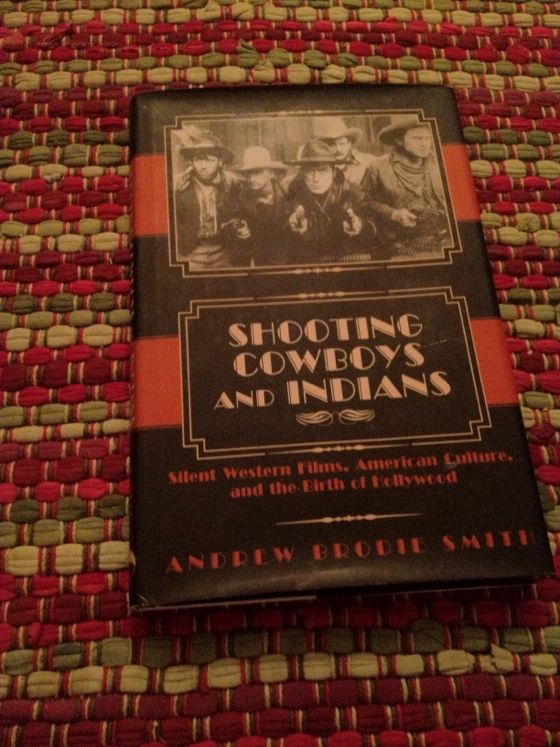
Although the first truly important narrative film made in America, The Great Train Robbery from 1903, was a Western of sorts, it took about five years before the Western-themed film resolved itself into a recognizable genre. It was a wild and wooly ride, which the form almost didn't survive. Like The Great Train Robbery, early Westerns focused on violent crimes. They modeled themselves on sensational Western dime novels and appealed mostly to kids and male working-class moviegoers — and to foreign audiences. When producers and distributors decided to court a higher class of clientele, including women, the Western came to seem unsavory, driving the better sort of folk away from the fancy new movie palaces that were gradually supplanting the storefront nickelodeon.
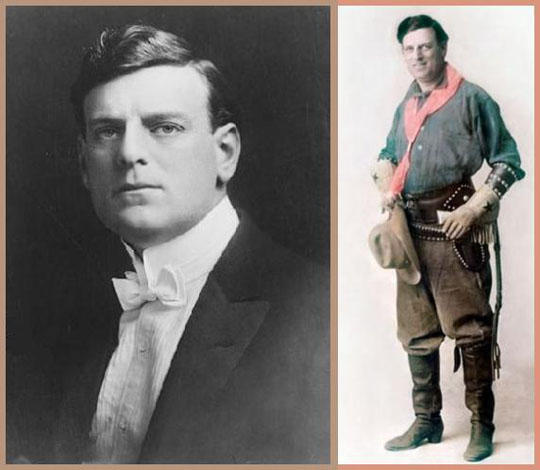
Gilbert “Bronco Billy” Anderson (above), who had played three bit parts in The Great Train Robbery, rode to the rescue by creating a Western hero who appealed to all classes and to women. “Bronco Billy” might start off as a bad man but his heart was always in the right place and he always ended up tamed by and defending conservative social values, usually personified by a beautiful and virtuous woman.
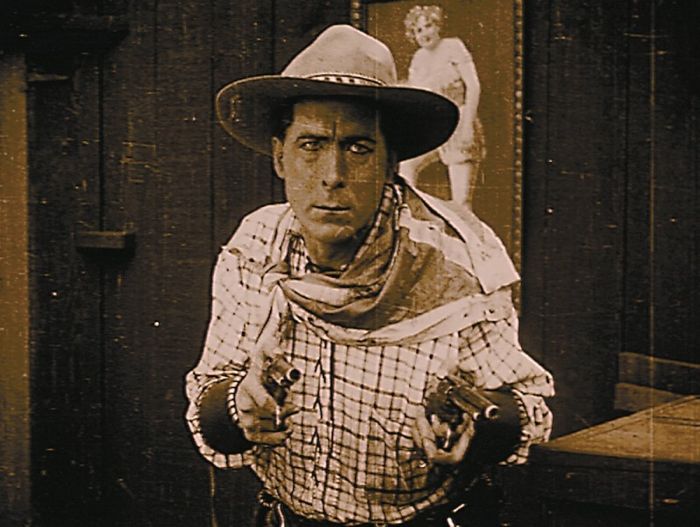
When Anderson lost interest in Westerns, and movies in general — his dream was to become a theatrical impresario — William S. Hart (above) was there to fill his boots. Hart played a tougher and more taciturn Western hero but like Anderson always came around to the defense of traditional values, religion and social order.
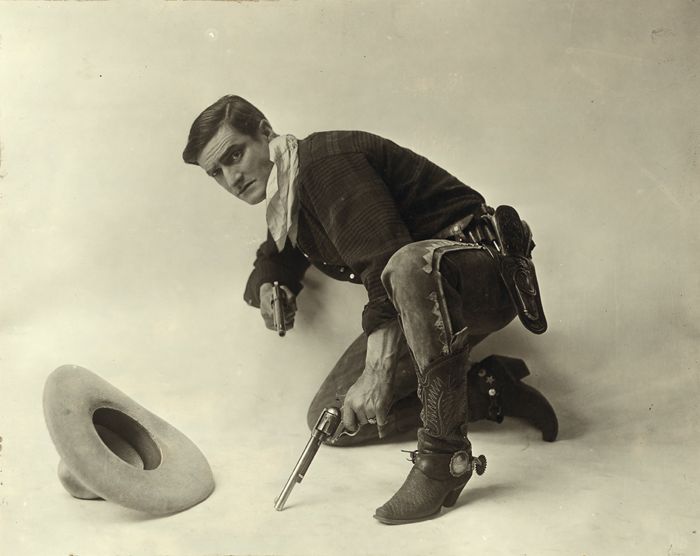
In the 1920s, an era of industry consolidation, the studios generally gave up on Westerns that might appeal to everyone. The B-Western was born, marketed once again to kids, to working-class males and to foreign audiences. These constituted a reliable though limited base for Westerns, which had to be cheap and formulaic to make money — but they made a lot of money on that basis and were a major source of studio profits. They produced big stars like Tom Mix, above, but stayed lean and mean where budgets were concerned.
The wonderful book by Andrew Brodie Smith pictured at the head of this post tells the tale of how the Western was born and how it evolved into a genre — restricted in form by the 1920s but still vital and immensely valuable to the industry. Well-researched and written, it's essential to understanding the role and nature of Westerns in the earliest years of cinema.
A HUGER FOOTE PHOTO FOR TODAY

[Photo © 2011 Huger Foote]
Tree, desert city.
AN HENRI GERVEX FOR TODAY
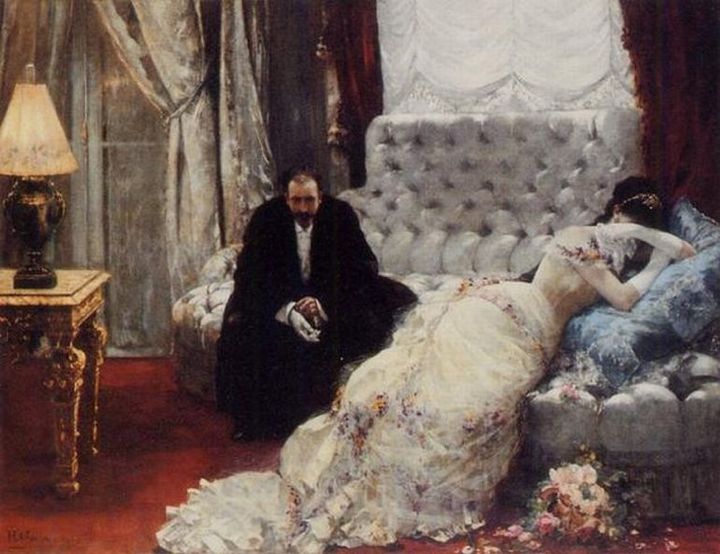
Retour de Bal, 1879.
Not a successful outing, as outings go.
APALACHICOLA, FLORIDA

This summer — Lee and Nora at the Up the Creek Raw Bar, by the docks where the shrimp boats come in.
APRÈS-SKI
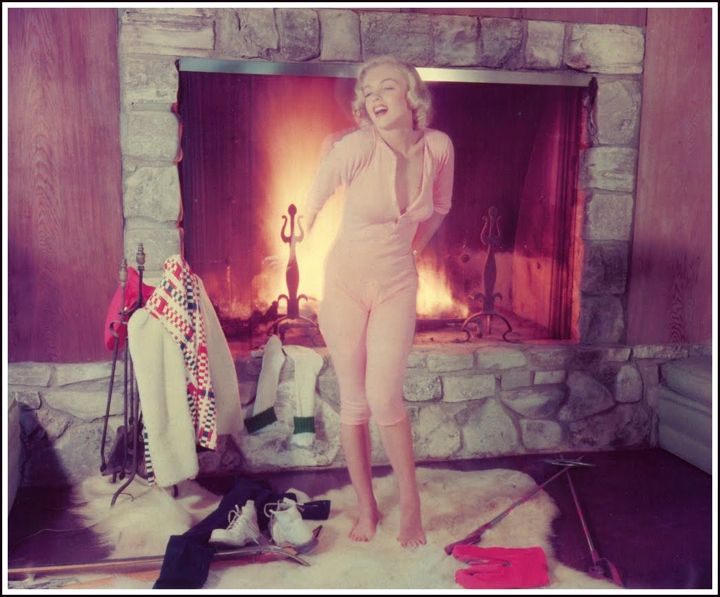
. . . what then?
A KENDRA ELLIOTT PHOTO FOR TODAY
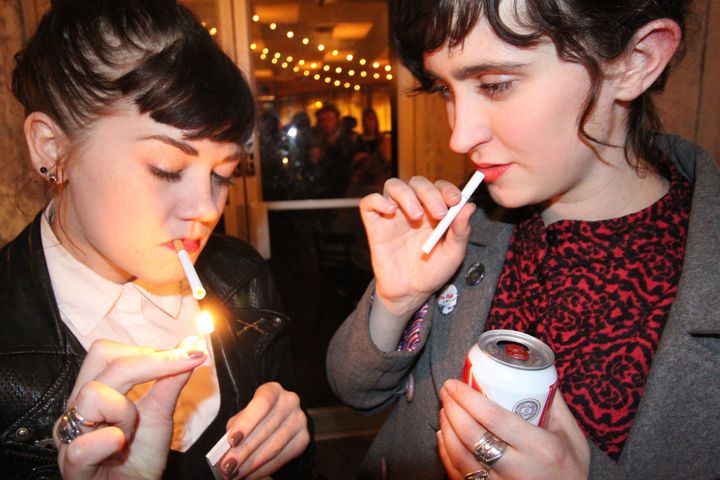
From Kendra's photo blog — Kendra.Elliott Photo.
GIL ELVGREN SAYS
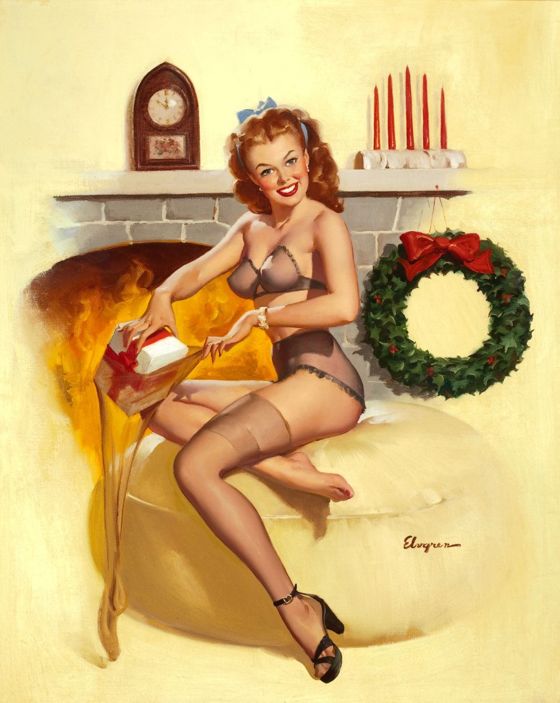
. . . merry Christmas to you, too!
A MAD MAGAZINE COVER FOR TODAY
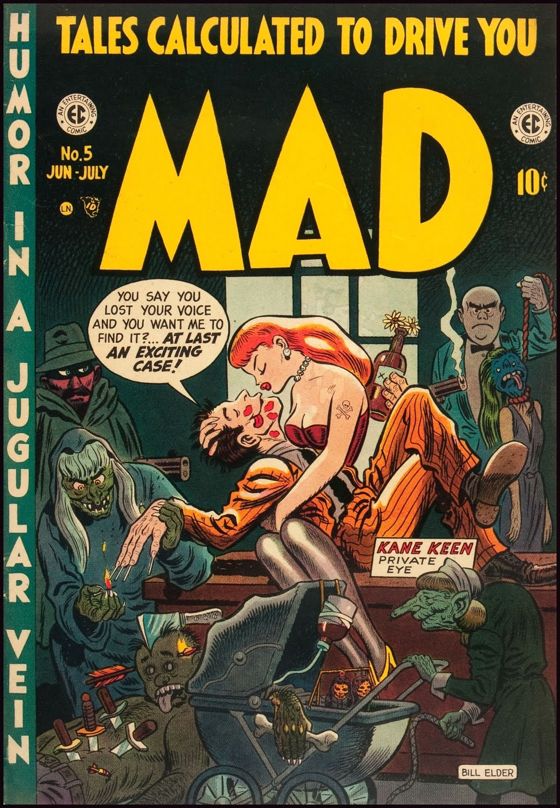
THE SEA, THE SEA
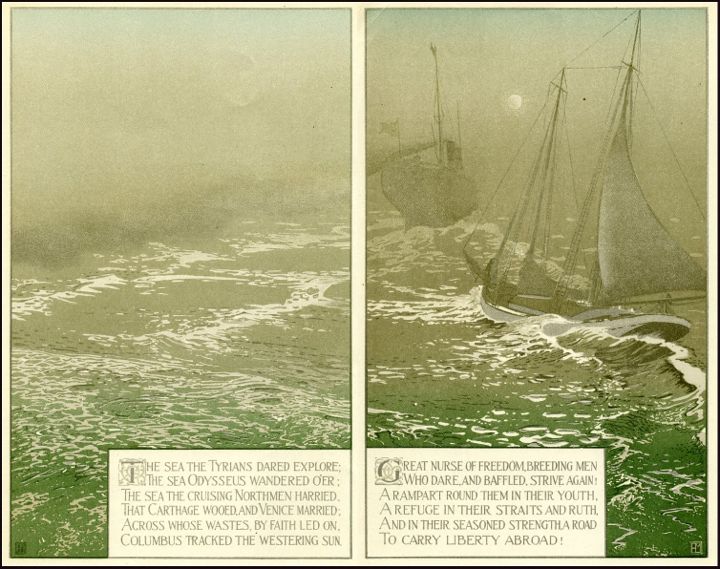
By Henry McCarter in the Century magazine, 1898.
THE WHITE ALBUM
Let me put my cards on the table right up front — I don't think The Beatles (commonly known as The White Album) is very good. It's the weakest album The Beatles ever released — and even though that might mean it's better than the best album many goods groups have put out, that isn't much of a consolation. The Beatles have to be judged by their own standards, and by those standards, The Beatles is second-rate.
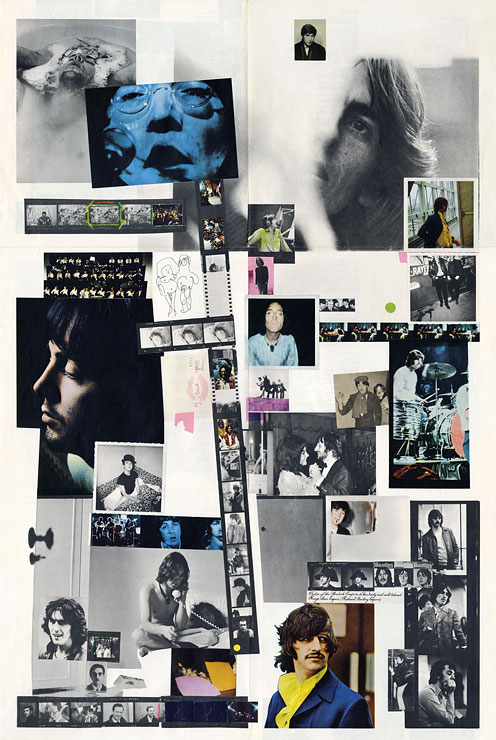
It's a fun album, to be sure — the songs are (for the most part) arranged and played and recorded with The Beatles' customary professionalism and musical inventiveness. The problem is the songwriting. The two-disc set is padded out with too many ditties that seem half-finished, tossed-off. They might be parts of great songs, or the germs of great songs, but as they stand they aren't even particularly good songs. Compare what the lads did with a similar batch of half-baked numbers on the second side of Abbey Road — turning them into a delightful musical montage that had a surreal unity of its own, like a deranged operetta.
At the time of The White Album Lennon and McCartney were basically writing (and sometimes recording) their songs separately. When each was firing on all cylinders, each could create magic — a Strawberry Fields or a Hey, Jude. At other times, though, the absence of the old synergy, when they were collaborating more closely, is keenly felt. Lennon's tendency towards more abstract imagery often resulted in self-indulgent incoherence — McCartney's tendency towards simple, sweet melodies often resulted in self-indulgent blandness. Both frequently found their way into the realm of banality.
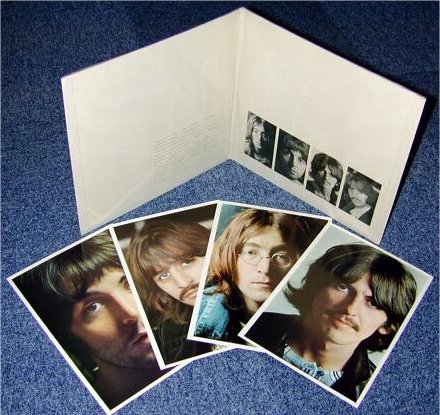
I won't go through the misfires track by track, I'll just offer my idea of the best one-disc album that could be extracted from The Beatles. (George Martin himself begged them to extract a single-disc album from the material they'd recorded, so my idea isn't totally perverse.) I've had to add two songs recorded during or around the time of the sessions for The Beatles, out of concerns for length and quality:
“Back in the U.S.S.R.”
“While My Guitar Gently Weeps”
“Piggies”
“Why Don't We Do It in the Road?”
“I Will”
“Julia”
“Hey, Jude”
“Birthday”
“Long, Long, Long”
“Helter Skelter”
“Revolution 1”
“Savoy Truffle”
“Lady Madonna”
“Good Night”
You'll note that I've kept all of Harrison's songs — which were of a uniformly high quality. Not up to the standards of Lennon and McCartney at their best, perhaps, but well and earnestly crafted.
I've included a couple of Paul's silly pastiches, because that's where his head was at at the time, and they're good enough, for what they are. I've left off one of his better songs, “Blackbird”, because I don't think the arrangement of the released version really serves it adequately.
I've shortchanged Lennon, certainly, but the songs of his I've omitted are substandard variations on ideas he executed better elsewhere.
Ringo's “Don't Pass Me By” is a song best forgotten, but he's represented by his sweet vocal on “Good Night”, with its endearing whispered coda, which is one of the great Beatles moments.
Program your CD or MP3 player to reproduce the track-list above and see what you think.
